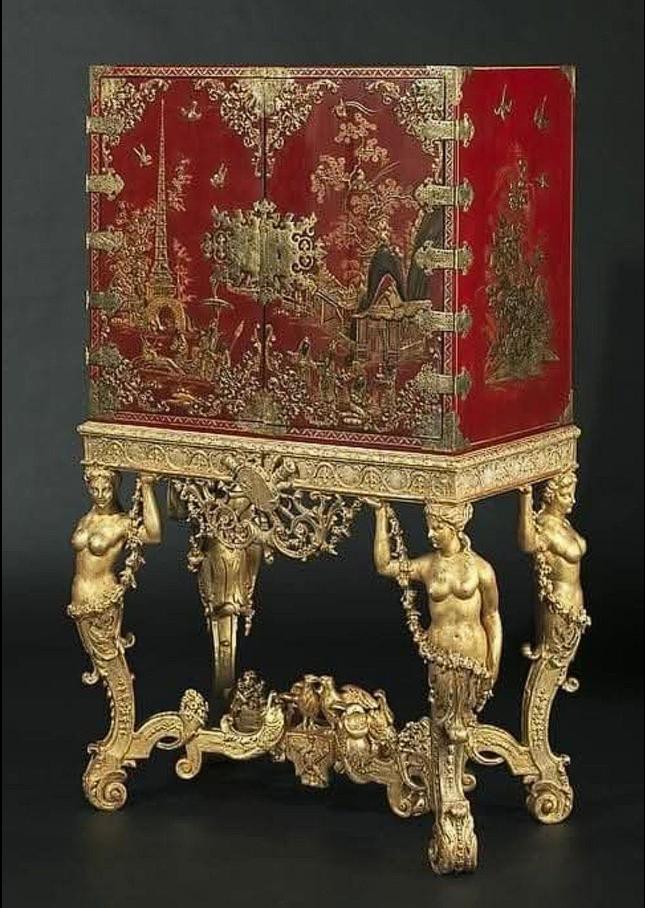Scarlet Japanned Cabinet: A Masterpiece of 17th-Century Craftsmanship
Dating to around 1690, this extraordinary cabinet on stand captures a moment when European craftsmanship reached dazzling new heights. Every inch gleams with rich scarlet japanning and intricate parcel-gilt detail, evoking an era when the bold, the exotic, and the opulent defined taste.
The Allure of Scarlet and Gold
The cabinet’s brilliant scarlet surface, punctuated by shimmering gilt accents and ornate brass mounts, immediately commands attention. Far from a mere furnishing, it was a statement piece — a testament to the wealth, sophistication, and cosmopolitan tastes of its owner. In an age when color symbolized power and status, few colors spoke louder than scarlet.
This luxurious combination of hues reflects the global ambitions of the late 17th century, when the courts of Europe, especially under the reign of William III, eagerly embraced the aesthetics of distant lands.
Imitating the East: The Art of Japanning
At the heart of this cabinet’s design lies the European fascination with the arts of East Asia. True lacquerware, with its deep, glossy finishes, was a marvel that had traveled from China and Japan to the courts of Europe, sparking a wave of artistic imitation known as japanning.
Artisans in England, France, and the Low Countries developed their own techniques to recreate the lush, layered look of Asian lacquer. Scarlet japanning, in particular, became a favorite — vivid, daring, and unlike anything seen before in European interiors. This cabinet showcases that enthusiasm perfectly, blending Eastern inspiration with the grand, theatrical style of the Baroque.
A Stand That Elevates
The cabinet itself is striking, but its beauty is further enhanced by the finely crafted stand it rests upon. Tall, elegant, and richly detailed, the stand lifts the cabinet to a commanding height, turning it into a centerpiece of any room. This interplay between form and function — furniture as sculpture — is a hallmark of the Baroque period’s most accomplished designs.
Together, the cabinet and its stand speak to a time when furniture was not just useful but symbolic. It carried the weight of personal ambition, cultural curiosity, and Europe’s ever-expanding global vision.
A Legacy of Global Influence
Today, this scarlet japanned cabinet stands as a vibrant relic of a transformative era — a moment when European artists looked beyond their borders for inspiration, embracing and adapting the wonders of the wider world. Its brilliant surface and intricate craftsmanship continue to captivate, reminding us of a time when art knew no boundaries, and beauty was a universal language.

CÁC TIN KHÁC
Mary Walton: The Forgotten Inventor Who Helped Clean Up America’s Cities
Tomb of Queen Nefertari in the Valley of the Queens, Egypt
Discover the Hypostyle Hall of the Temple of Hathor at Dendera
Venus de Losange: Unveiling the Mystery of a 20,000-Year-Old Paleolithic Icon